Paolo Pellizzoni
The Flood Complex: Large-Scale Persistent Homology on Millions of Points
Sep 26, 2025



Abstract:We consider the problem of computing persistent homology (PH) for large-scale Euclidean point cloud data, aimed at downstream machine learning tasks, where the exponential growth of the most widely-used Vietoris-Rips complex imposes serious computational limitations. Although more scalable alternatives such as the Alpha complex or sparse Rips approximations exist, they often still result in a prohibitively large number of simplices. This poses challenges in the complex construction and in the subsequent PH computation, prohibiting their use on large-scale point clouds. To mitigate these issues, we introduce the Flood complex, inspired by the advantages of the Alpha and Witness complex constructions. Informally, at a given filtration value $r\geq 0$, the Flood complex contains all simplices from a Delaunay triangulation of a small subset of the point cloud $X$ that are fully covered by balls of radius $r$ emanating from $X$, a process we call flooding. Our construction allows for efficient PH computation, possesses several desirable theoretical properties, and is amenable to GPU parallelization. Scaling experiments on 3D point cloud data show that we can compute PH of up to dimension 2 on several millions of points. Importantly, when evaluating object classification performance on real-world and synthetic data, we provide evidence that this scaling capability is needed, especially if objects are geometrically or topologically complex, yielding performance superior to other PH-based methods and neural networks for point cloud data.
Endowing Protein Language Models with Structural Knowledge
Jan 26, 2024Abstract:Understanding the relationships between protein sequence, structure and function is a long-standing biological challenge with manifold implications from drug design to our understanding of evolution. Recently, protein language models have emerged as the preferred method for this challenge, thanks to their ability to harness large sequence databases. Yet, their reliance on expansive sequence data and parameter sets limits their flexibility and practicality in real-world scenarios. Concurrently, the recent surge in computationally predicted protein structures unlocks new opportunities in protein representation learning. While promising, the computational burden carried by such complex data still hinders widely-adopted practical applications. To address these limitations, we introduce a novel framework that enhances protein language models by integrating protein structural data. Drawing from recent advances in graph transformers, our approach refines the self-attention mechanisms of pretrained language transformers by integrating structural information with structure extractor modules. This refined model, termed Protein Structure Transformer (PST), is further pretrained on a small protein structure database, using the same masked language modeling objective as traditional protein language models. Empirical evaluations of PST demonstrate its superior parameter efficiency relative to protein language models, despite being pretrained on a dataset comprising only 542K structures. Notably, PST consistently outperforms the state-of-the-art foundation model for protein sequences, ESM-2, setting a new benchmark in protein function prediction. Our findings underscore the potential of integrating structural information into protein language models, paving the way for more effective and efficient protein modeling Code and pretrained models are available at https://github.com/BorgwardtLab/PST.
Fisher Information Embedding for Node and Graph Learning
May 12, 2023
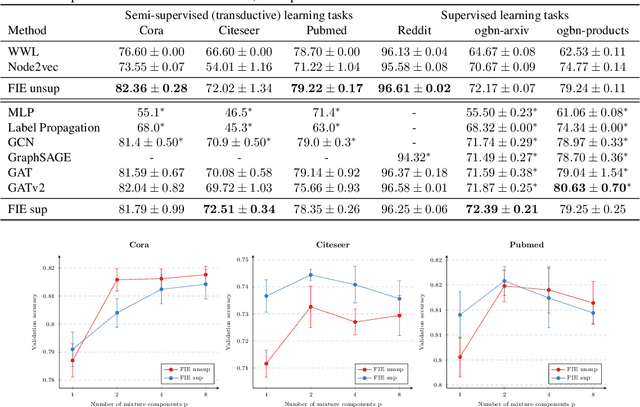
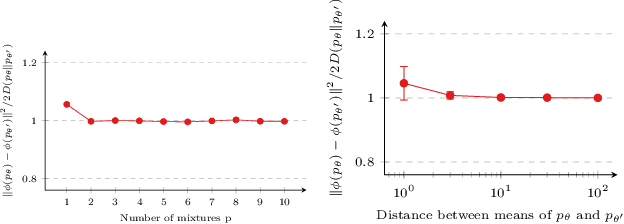
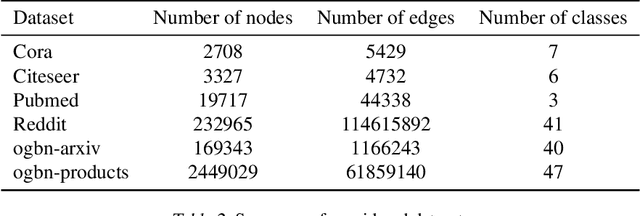
Abstract:Attention-based graph neural networks (GNNs), such as graph attention networks (GATs), have become popular neural architectures for processing graph-structured data and learning node embeddings. Despite their empirical success, these models rely on labeled data and the theoretical properties of these models have yet to be fully understood. In this work, we propose a novel attention-based node embedding framework for graphs. Our framework builds upon a hierarchical kernel for multisets of subgraphs around nodes (e.g. neighborhoods) and each kernel leverages the geometry of a smooth statistical manifold to compare pairs of multisets, by "projecting" the multisets onto the manifold. By explicitly computing node embeddings with a manifold of Gaussian mixtures, our method leads to a new attention mechanism for neighborhood aggregation. We provide theoretical insights into genralizability and expressivity of our embeddings, contributing to a deeper understanding of attention-based GNNs. We propose efficient unsupervised and supervised methods for learning the embeddings, with the unsupervised method not requiring any labeled data. Through experiments on several node classification benchmarks, we demonstrate that our proposed method outperforms existing attention-based graph models like GATs. Our code is available at https://github.com/BorgwardtLab/fisher_information_embedding.
k-Center Clustering with Outliers in Sliding Windows
Jan 07, 2022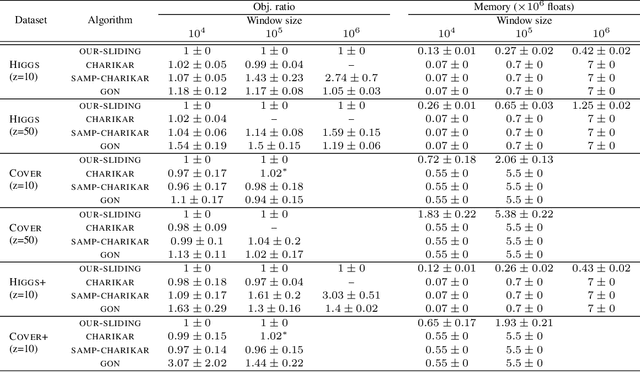
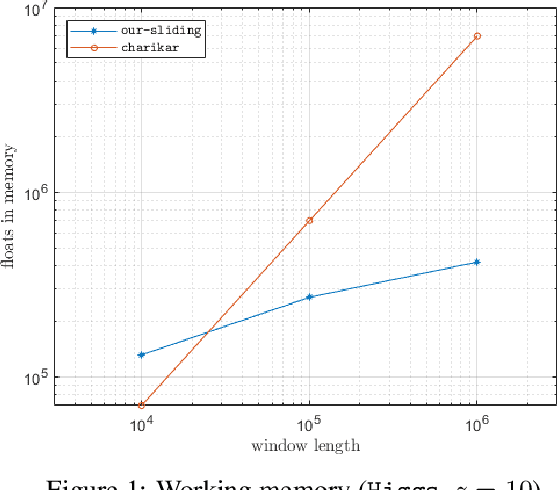

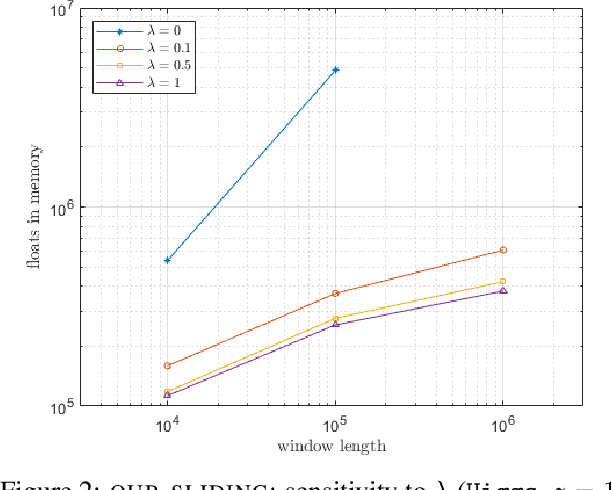
Abstract:Metric $k$-center clustering is a fundamental unsupervised learning primitive. Although widely used, this primitive is heavily affected by noise in the data, so that a more sensible variant seeks for the best solution that disregards a given number $z$ of points of the dataset, called outliers. We provide efficient algorithms for this important variant in the streaming model under the sliding window setting, where, at each time step, the dataset to be clustered is the window $W$ of the most recent data items. Our algorithms achieve $O(1)$ approximation and, remarkably, require a working memory linear in $k+z$ and only logarithmic in $|W|$. As a by-product, we show how to estimate the effective diameter of the window $W$, which is a measure of the spread of the window points, disregarding a given fraction of noisy distances. We also provide experimental evidence of the practical viability of our theoretical results.
 Add to Chrome
Add to Chrome Add to Firefox
Add to Firefox Add to Edge
Add to Edge